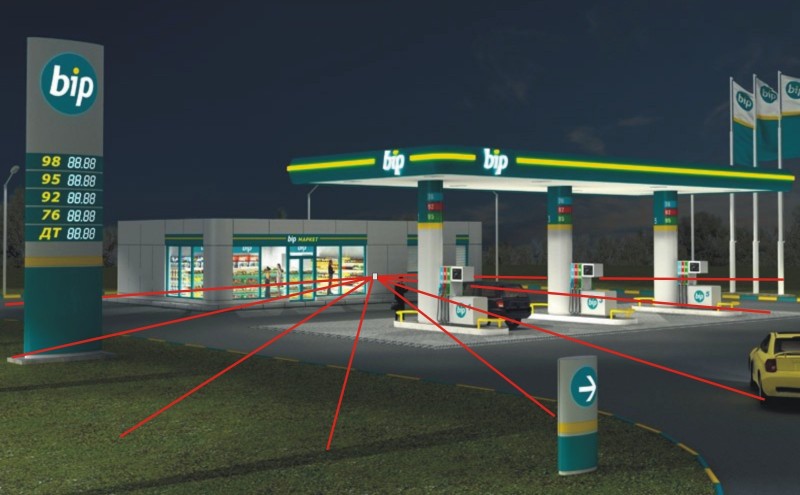- Main
- Applications
- For gas station
For gas station
In the absence of visitors, the lighting of the filling and adjacent areas can operate in an economical mode consuming 10–14 times less electricity. For example, a 65W LED bulb in minimum luminous flux mode consumes only 4W!
When installing the K2150 sensor on the wall, its sensitivity zone is about 3000 square meters (70x40m).
Fig. 1. Installation of the motion sensor in a filling station
For most filling stations, it is enough to install one motion sensor K2150. For lighting to work comfortably and be safe, we recommend using a dimming scheme, i.e., with a smooth adjustment of the bulb light flux with regard to presence of a person or a vehicle. In this case, lighting will always be on where your object is in the dark time, only its power will change. In order to preserve the overall design of the filling station, the sensor can be hidden behind any radio transparent material (plastic).
How does an automatic work?
When it gets dark outside, the lighting is switched on by any externally driven automatic device, such as a photo relay or an astronomical timer. The sensor starts to maintain the power set at a reduced lighting (20–30% of the nominal value). When any motion of a vehicle or a person is detected, the sensor slowly increases the luminous flux of the bulbs to 100% during 1.5 seconds. As long as there is a movement, the lighting operates at full power. When movement has stopped and no one has appeared in this area during the set delay time (0.5 - 10 min), the bulbs smoothly reduce power to the set value of economy mode during 10 sec.
At automated filling stations without maintenance personnel, the sensor can be connected to IP cameras via a special interface in addition to lighting control and adjust the recording quality (number of frames per second), as well as send a signal to the dispatcher when a new visitor arrives.




